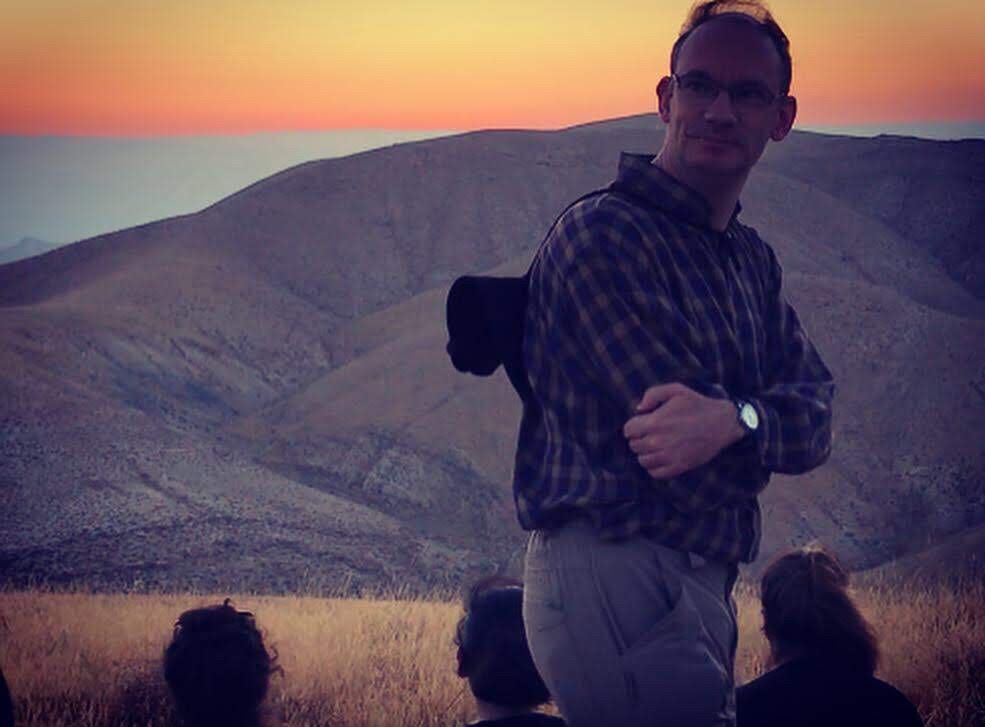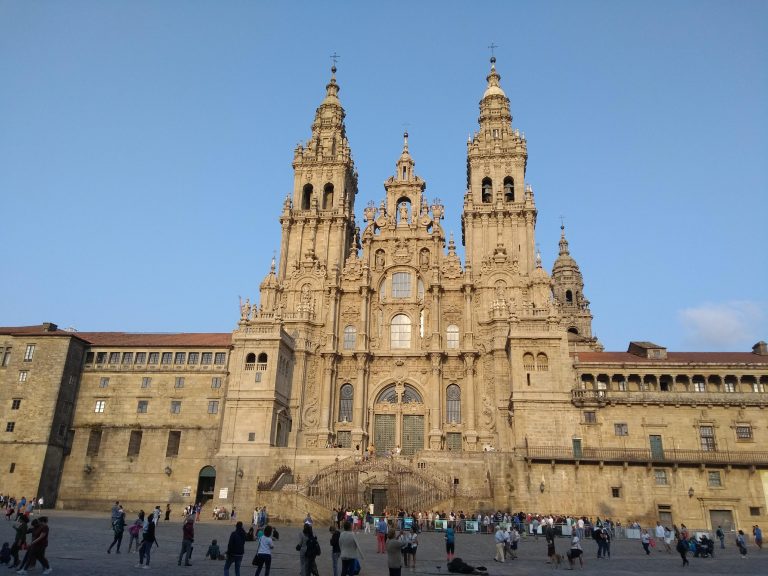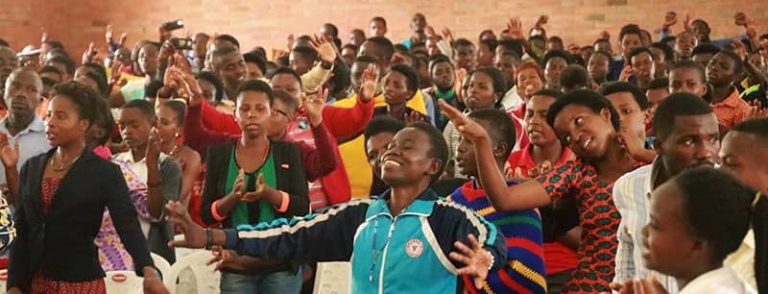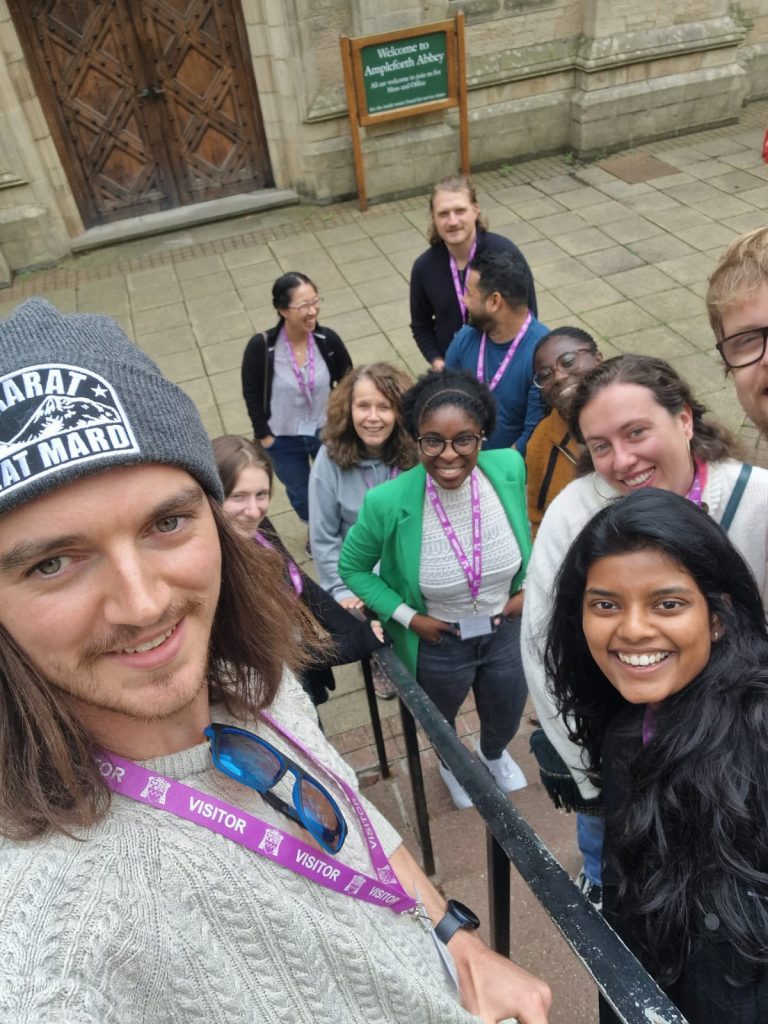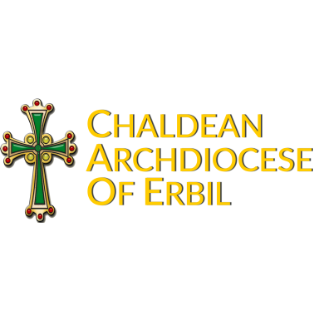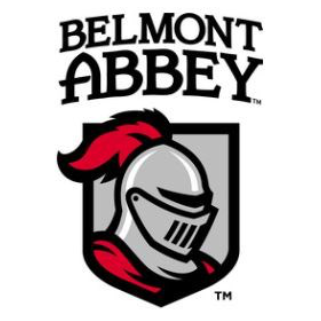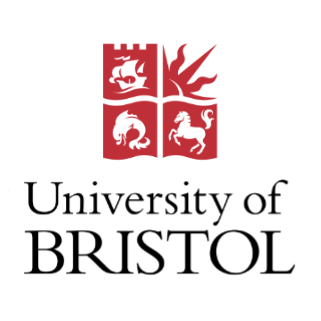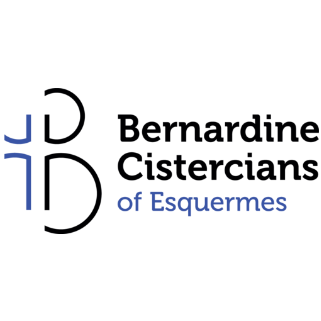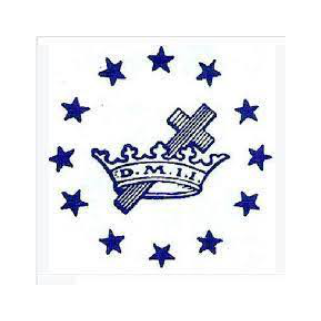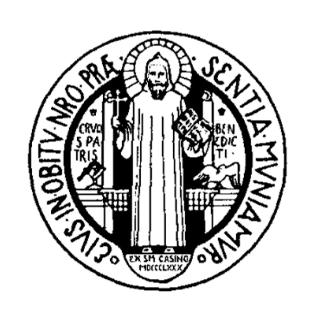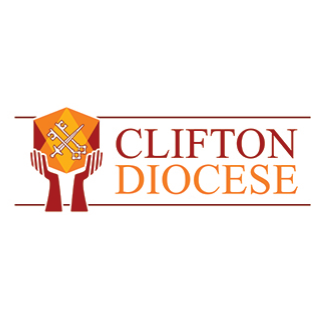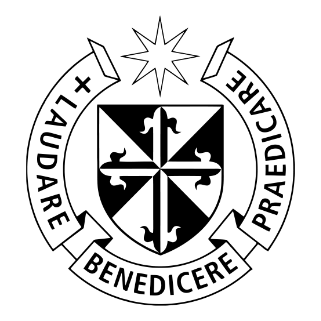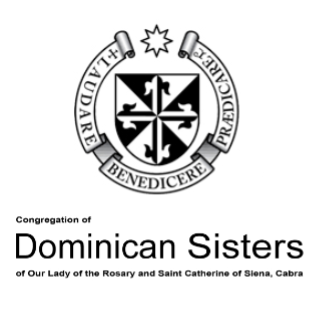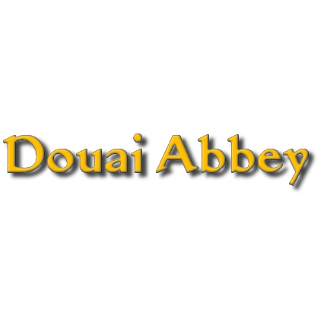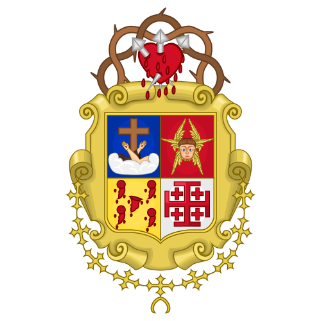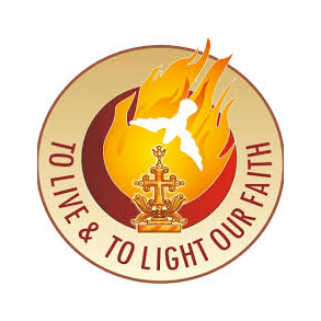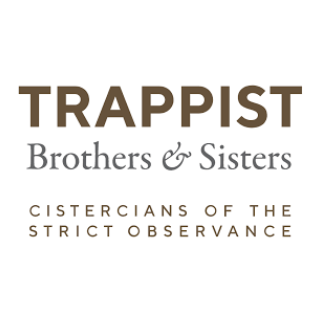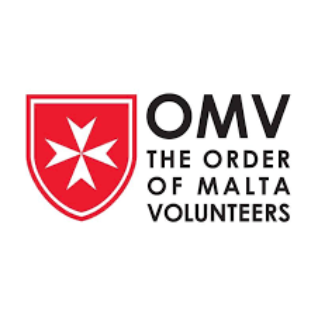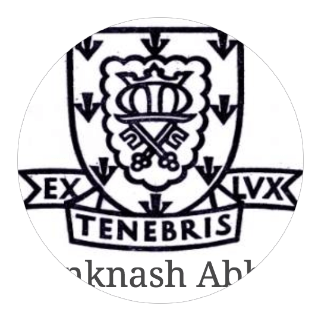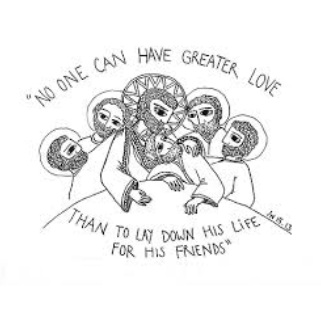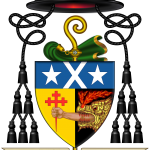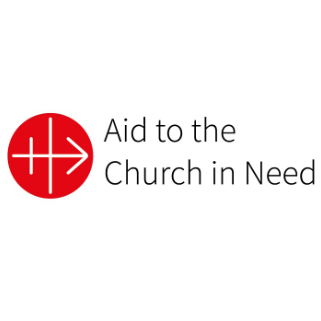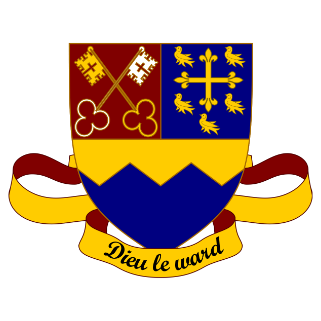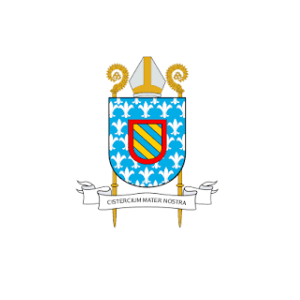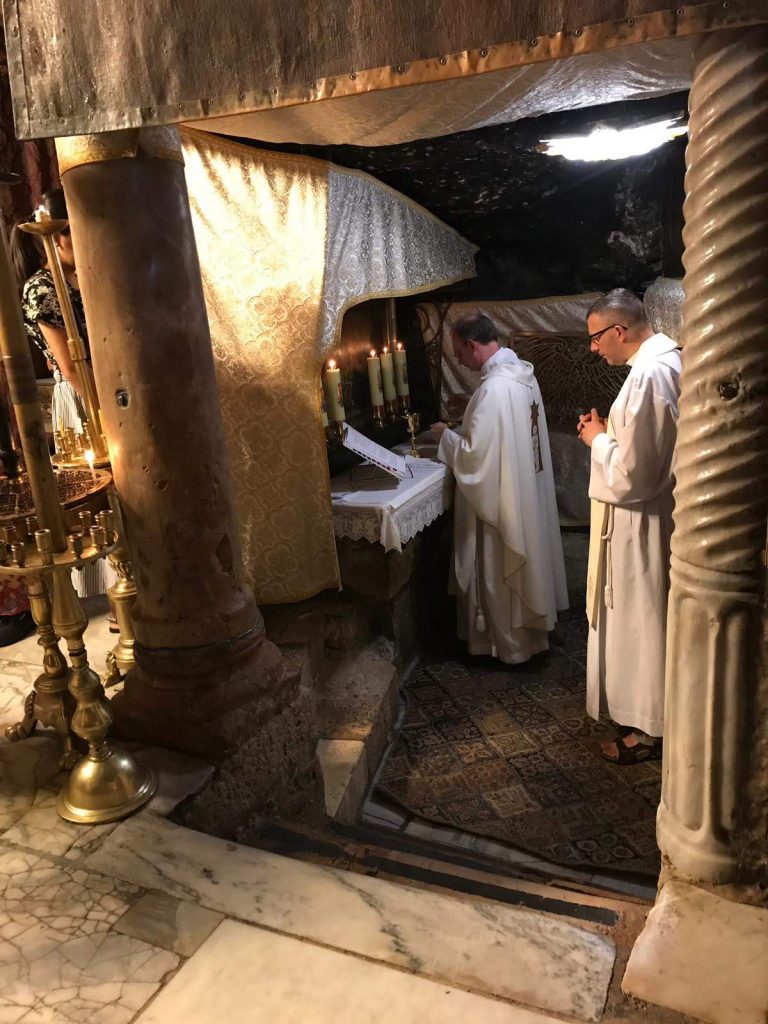
7. Mass as a Sacrifice
This is perhaps one of the least understand aspects of the Mass, associated with the Extraordinary Form, and one that people wrongly think was changed at the Second Vatican Council. When we say that the Mass is a sacrifice we mean that it is the re-presentation (note the hyphen!) of the sacrifice of Christ on Calvary. When we attend Mass we stand with Our Lady and St John at the foot of the cross; we are transported back 2000 or more years to that moment. We believe this because the Mass is a memorial. This term is related to the Hebrew concept, whereby we relive an event, rather than just remembering. It is not a purely intellectual matter. In Exodus 12, when the Israelites are given instructions about how they are to celebrate the Passover, they are told to dress in a similar manner, to eat quickly, to eat the same food. They are to re-live the Passover. The same applies to the Mass.
At the Last Supper, which was a Passover meal in the synoptic Gospels, Jesus told his disciples to “Do this in memory of me”. He has already said that “This is my body…This is my blood”. As Christ gave his Body and Blood on the cross for our salvation, so the Mass re-presents that one sacrifice. The Council of Trent put it succinctly: “In this divine sacrifice which is celebrated in the Mass, the same Christ who offered himself once in a bloody manner on the altar of the cross is contained and is offered in an unbloody manner”.
8. Mass as a Meal
This is often viewed as the “modern” way of thinking about the Mass, but this aspect is also present in the Extraordinary Form. In the Mass we are not only present at the foot of the cross, but at the table of the Last Supper, when Christ first gave his disciples bread and wine as his Body and Blood. That took place in the context of a ritual meal, the Passover meal, where all the words and actions have significance, just as they do in the Mass. The priest takes the part of Christ and we are there as the disciples. A meal is a communal activity and so too the Mass is a communal act, no matter how many or how few are present. Participating in the Mass is a reminder that we are not alone, but that we are part of something bigger – not just our family, our friendship group, but a parish, a diocese and the Universal Church throughout the world, united through the local Bishop with the Pope and all Catholics in the world.
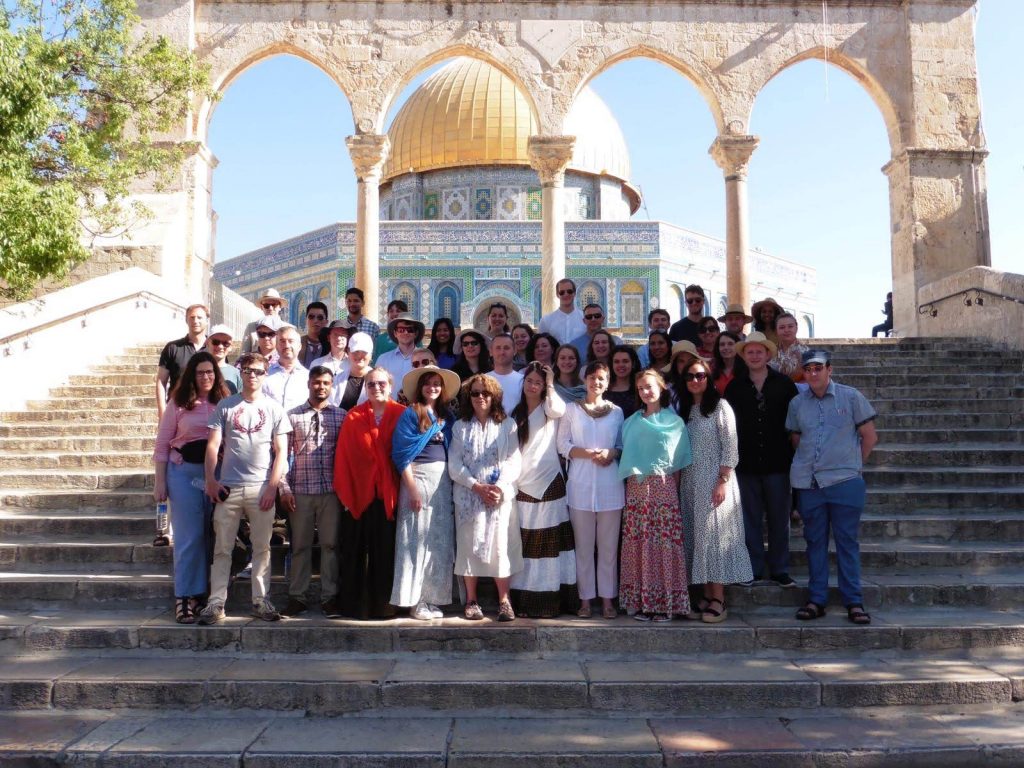
9. The Real Presence
The belief in the Real Presence of Christ in Holy Communion is associated with Catholics in a particular way, but it is unlikely that you will find any Protestant that believes in the “real absence”! We believe that the bread and wine truly and substantially become the Body and Blood of Christ whilst still looking like bread and wine. St Thomas Aquinas called this “transubstantiation” – the change of the substance.
Aquinas used the philosophy of Aristotle to define the biblical doctrine. He said that things have a substance (what they really are) and accidents (how they look, taste, feel). Imagine identical twins called John and James. John is quiet, a musician who spends his time practising the cello or in the library. James is outgoing, a sportsman and not very bright. If the Holy Spirit were to change their personalities, then John would become like James and vice versa, but they would still look exactly the same. We can use this analogy for the change of the bread and wine. The Holy Spirit changes the substance (what they really are) but the accidents (how they look, taste etc) remain the same.
However, this is not just a philosophical or theological conundrum, but a biblical teaching. In the Last Supper, Jesus said “This [is] my body… my blood”. He did not indicate that they are purely symbolic. He could have said “This is like my body…my blood” (which would have been very straightforward in Aramaic or Hebrew), but he didn’t.
Perhaps an even more compelling text is John 6:35-58. If we look at the structure of this passage, we see that the first part speaks of Jesus as the Bread of Life in a way that can refer to Wisdom or the Law in the Old Testament. Once we reach verse 53 we have a change in vocabulary. Jesus talks about the need to eat his flesh and drink his blood in order to gain eternal life. In Greek the term used for “eat” is more accurately translated as “chew” or “gnaw” and in Biblical Greek this is only used for actual eating. Similarly the word for “flesh” refers to the flesh on a body. The hearers understand Jesus to mean exactly this, since they say “This is a hard saying; who can listen to it?” (6:60). This idea of the real change of the bread and wine into the Body and Blood of Christ is continued in the early Church Fathers as well.
So the Catholic doctrine of transubstantiation is clearly biblical!
[This is the final part of the article]
